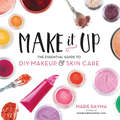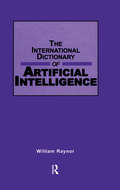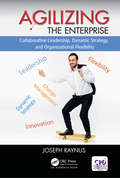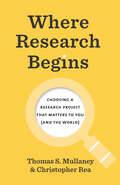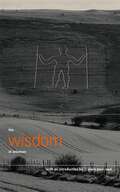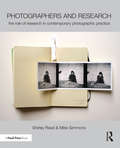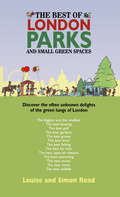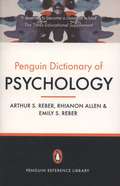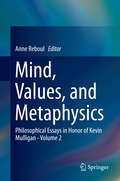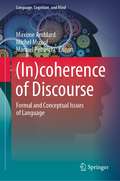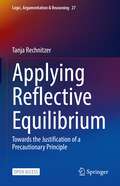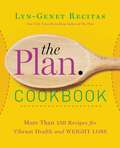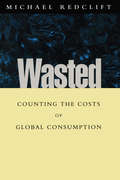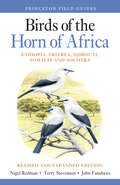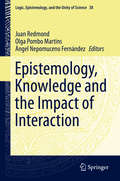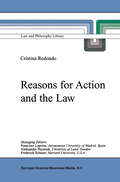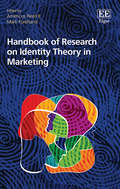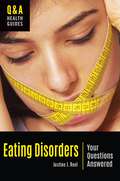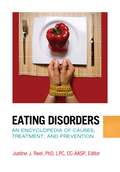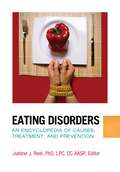- Table View
- List View
Make It Up: The Essential Guide to DIY Makeup and Skin Care
by Marie RaymaEver think of making your own beauty products- handmade, high performance, healthy alternatives to just about every chemical laden product you currently put on your face and body? It's easier than you think!In Make It Up author Marie Rayma shares the recipes she has developed through years of trial, error, and testing to come up with the very best. This is real makeup and skincare: bright lipsticks, quality mineral powders, long-wearing eyeliners, and masks and cleansers that yield results. Rayma walks you through natural ingredients available online or at health food stores. These awesome oils, butters, clays, and minerals will replace the petroleum products, artificial colors, and lab-created mystery fragrances that have untold effects on our bodies. Products can be tailored for individual needs-from swapping out ingredients not suitable for sensitive skin to whipping up the perfect colors suited for any complexion.With easy-to-follow instruction, Make It Up provides more than 40 essential cosmetics and skin care projects so you can make just what you want, when you need it.
Make It Up: The Essential Guide to DIY Makeup and Skin Care
by Marie RaymaEver think of making your own beauty products -- handmade, high performance, healthy alternatives to just about every chemical laden product you currently put on your face and body? It's easier than you think!In Make It Up author Marie Rayma shares the recipes she has developed through years of trial, error, and testing to come up with the very best. This is real makeup and skincare: bright lipsticks, quality mineral powders, long-wearing eyeliners, and masks and cleansers that yield results. Rayma walks you through natural ingredients available online or at health food stores. These awesome oils, butters, clays, and minerals will replace the petroleum products, artificial colors, and lab-created mystery fragrances that have untold effects on our bodies. Products can be tailored for individual needs -- from swapping out ingredients not suitable for sensitive skin to whipping up the perfect colors suited for any complexion.With easy-to-follow instruction, Make It Up provides more than 40 essential cosmetics and skin care projects so you can make just what you want, when you need it.
International Dictionary of Artificial Intelligence
by William RaynorFirst Published in 1998. Artificial intelligence is increasingly employed in all areas of human endeavor and industry. Anticipating the needs of professionals, researchers, and students alike, International Dictionary of Artificial Intelligence defines and illustrates over 2,500 terms and provides detailed explanations of major concepts as well as topics in related disciplines. The Dictionary also contains an annotated bibliography and an extensive appendix of World Wide Web sites devoted to the latest trends and developments in the world of artificial intelligence.
International Dictionary of Artificial Intelligence
by William RaynorFirst Published in 1998. Artificial intelligence is increasingly employed in all areas of human endeavor and industry. Anticipating the needs of professionals, researchers, and students alike, International Dictionary of Artificial Intelligence defines and illustrates over 2,500 terms and provides detailed explanations of major concepts as well as topics in related disciplines. The Dictionary also contains an annotated bibliography and an extensive appendix of World Wide Web sites devoted to the latest trends and developments in the world of artificial intelligence.
Agilizing the Enterprise
by Joseph RaynusAre you still searching for the workplace that deserves someone like you? Do you really have a good understanding about what is going on out there, in the business world? In this book, we will discuss the importance of agility and how it affects the solutions that are being delivered by an organization. We will also talk about how a blend of strategic innovation, visionary leadership, and organizational agility go hand in hand to ensure the success of an organization. Enterprise agility is not a far-fetched possibility. Once the problems of the organization are identified, with the right tools and effort, the agility, efficiency, and effectiveness of an organization, as well as the processes that the success of the organization are based on, can all be maximized. This book will broaden your thinking and will help you expand your horizons.
Agilizing the Enterprise
by Joseph RaynusAre you still searching for the workplace that deserves someone like you? Do you really have a good understanding about what is going on out there, in the business world? In this book, we will discuss the importance of agility and how it affects the solutions that are being delivered by an organization. We will also talk about how a blend of strategic innovation, visionary leadership, and organizational agility go hand in hand to ensure the success of an organization. Enterprise agility is not a far-fetched possibility. Once the problems of the organization are identified, with the right tools and effort, the agility, efficiency, and effectiveness of an organization, as well as the processes that the success of the organization are based on, can all be maximized. This book will broaden your thinking and will help you expand your horizons.
Where Research Begins: Choosing a Research Project That Matters to You (and the World) (Chicago Guides to Writing, Editing, and Publishing)
by Christopher Rea Thomas S. MullaneyPlenty of books tell you how to do research. This book helps you figure out WHAT to research in the first place, and why it matters. The hardest part of research isn't answering a question. It's knowing what to do before you know what your question is. Where Research Begins tackles the two challenges every researcher faces with every new project: How do I find a compelling problem to investigate—one that truly matters to me, deeply and personally? How do I then design my research project so that the results will matter to anyone else? This book will help you start your new research project the right way for you with a series of simple yet ingenious exercises. Written in a conversational style and packed with real-world examples, this easy-to-follow workbook offers an engaging guide to finding research inspiration within yourself, and in the broader world of ideas. Read this book if you (or your students): have difficulty choosing a research topic know your topic, but are unsure how to turn it into a research project feel intimidated by or unqualified to do research worry that you’re asking the wrong questions about your research topic have plenty of good ideas, but aren’t sure which one to commit to feel like your research topic was imposed by someone else want to learn new ways to think about how to do research. Under the expert guidance of award-winning researchers Thomas S. Mullaney and Christopher Rea, you will find yourself on the path to a compelling and meaningful research project, one that matters to you—and the world. For more information, online classes, webinars, and other materials related to the book, see the Where Research Begins website.
The Wisdom of Solomon (The Pocket Canons #18)
by Piers Paul ReadTraditionally believed to be written by King Solomon himself, though later attributed to his friends and followers, the author of the Greek text is well versed in the popular philosophical, religious, and ethical writings adopted by Hellenistic Alexandria. In his introduction, Piers Paul Read contemplates this story that impressed him greatly as a child, one in which wisdom pleases God so greatly he gives Solomon everything else besides
Photographers and Research: The role of research in contemporary photographic practice
by Shirley Read Mike SimmonsThis ground-breaking book situates research at the heart of photographic practice, asking the key question: What does research mean for photographers? Illuminating the nature and scope of research and its practical application to photography, the book explores how research provides a critical framework to help develop awareness, extend subject knowledge, and inform the development of photographic work. The authors consider research as integral to the creative process and, through interviews with leading photographers, explore how photographers have embedded research strategies into their creative practice.
Photographers and Research: The role of research in contemporary photographic practice
by Shirley Read Mike SimmonsThis ground-breaking book situates research at the heart of photographic practice, asking the key question: What does research mean for photographers? Illuminating the nature and scope of research and its practical application to photography, the book explores how research provides a critical framework to help develop awareness, extend subject knowledge, and inform the development of photographic work. The authors consider research as integral to the creative process and, through interviews with leading photographers, explore how photographers have embedded research strategies into their creative practice.
The Best Of London Parks and Small Green Spaces
by Simon Read Louise Read'A fully comprehensive guide . . . includes information and tips that even the park officers do not know about!' - What's on in London'The Best of London Parks is a guide to more than 70 green spaces, with details of all their sporting facilities: from horse riding to Aussie rules football' - The TimesLondon is one of the green cities in the world with thousands of acres of parks. There is a wealth of inexpensive, top quality facilities in the Parks that are often not known about even by the people who live near to them. These include numerous sports such as tennis, rugby, football, golf and bowls. There are gyms and athletics tracks, free playgrounds and paddling pools for children and clubs for their parents to meet and relax together. Every park in central London is covered. For each of these famous parks, there is a chapter detailing their history and all they have to offer. The chapters have something for all interests from the price of bacon butties, to rare goats (with frost-proof ears), to tennis courts, to boating. The information includes a brief historical background, how to get to the park, the opening times of all facilities and costs. Each park has a list of highlights and nearby places of interest and the larger parks include a map.
The Penguin Dictionary of Psychology (Fourth Edition) (PDF)
by Arthur S. Reber Rhiannon Allen Emily S. ReberThe Penguin Dictionary of Psychology has become a byword for demystifying the language of this complex subject. Now fully updated for its fourth edition, this wide-ranging and accessible dictionary is invaluable for both students and professionals, and an indispensable guide to all areas of psychology and psychiatry.
Mind, Values, and Metaphysics: Philosophical Essays in Honor of Kevin Mulligan - Volume 2
by Anne ReboulThere are three themed parts to this book: values, ethics and emotions in the first part, epistemology, perception and consciousness in the second part and philosophy of mind and philosophy of language in the third part. Papers in this volume provide links between emotions and values and explore dependency between language, meanings and concepts and topics such as the liar’s paradox, reference and metaphor are examined.This book is the second of a two-volume set that originates in papers presented to Professor Kevin Mulligan, covering the subjects that he contributed to during his career. This volume opens with a paper by Moya, who proposes that there is an asymmetrical relation between the possibility of choice and moral responsibility. The first part of this volume ends with a description of foolishness as insensitivity to the values of knowledge, by Engel. Marconi’s article makes three negative claims about relative truth and Sundholm notes shortcomings of the English language for epistemology, amongst other papers. This section ends with a discussion of the term ‘subjective character’ by Nida-Rümelin, who finds it misleading.The third part of this volume contains papers exploring topics such as the mind-body problem, whether theory of mind is based on simulation or theory and Künne shows that the most common analyses of the so-called 'Liar' paradox are wanting. At the end of this section, Rizzi introduces syntactic cartography and illustrates its use in scope-discourse semantics.This second volume contains twenty nine chapters, written by both high profile and upcoming researchers from across Europe, North America and North Africa.The first volume of this set has two main themes: metaphysics, especially truth-making and the notion of explanation and the second theme is the history of philosophy with an emphasis on Austrian philosophy.
**Missing**: Formal and Conceptual Issues of Language (Language, Cognition, and Mind #10)
by Manuel Rebuschi Michel Musiol Maxime AmblardThis present book explores recent advances in modeling discourse processes, in particular, new approaches aimed at understanding pathological language behavior specific to schizophrenia. The contributors examine the modeling paradigm of formal semantics, which falls within the scope of both linguistics and logic while providing overlapping links with other fields such as philosophy of language and cognitive psychology. This book is based on results presented during the series of workshops on (In)Coherence and Discourse organized by SLAM (Schizophrenia and Language: Analysis and Modeling), a project developed to systemize the study of pathological language processing by taking an overarching interdisciplinary approach combining psychology, linguistics, computer science and philosophy. The principle focus is on conversations produced by people with psychiatric disorders such as schizophrenia and autism. The contributions come from young and experienced researchers, and invited speakers. The book appeals to likeminded students and researchers.
Applying Reflective Equilibrium: Towards the Justification of a Precautionary Principle (Logic, Argumentation & Reasoning #27)
by Tanja RechnitzerThis open access book provides the first explicit case study for an application of the method of reflective equilibrium (RE), using it to develop and defend a precautionary principle. It thereby makes an important and original contribution to questions of philosophical method and methodology. The book shows step-by-step how RE is applied, and develops a methodological framework which will be useful for everyone who wishes to use reflective equilibrium. With respect to precautionary principles, the book demonstrates how a rights-based precautionary principle can be constructed and defended. The case study succeeds in demonstrating that RE can be successfully applied and puts real constraints on the justification process. This is all the more remarkable as the case study was designed as an open-ended process, without presupposing any specific results. This book will be highly relevant both to people interested in philosophical methodology and epistemology, as well as to researchers who are interested in using philosophical methods and tools and applying them to practical problems.
The Plan Cookbook: More Than 150 Recipes for Vibrant Health and Weight Loss
by Lyn-Genet RecitasRecipes to use with the groundbreaking, New York Times bestselling diet plan that helps you eliminate the surprising "healthy" foods that are actually making you fat.In her New York Times and USA Today bestseller The Plan, Lyn-Genet Recitas revealed what surprisingly "healthy" foods cause weight gain and a host of other health problems such as migraines, joint pain, and depression. Now all those who follow The Plan, and have learned which foods to eliminate from their diets, can support their new, healthier lifestyle with these delicious recipes. Recitas includes selections for breakfast, lunch, dinner, snacks, sides, and desserts, such as Panko Crusted Orange Chipotle Chicken, Brazilian Coconut Rice, Provencal Fish with Fennel, Lemon, and Herbs, Red Velvet Cupcakes, and many more. Who says a healthy diet can't be a tasty one?
Wasted: Counting the costs of global consumption
by Michael RedcliftSustainable development cannot be achieved solely at the international level. Without the creation of more sustainable livelihoods, it will remain a utopian and elusive goal. Yet given the huge differences in economic development and levels of consumption between North and South, how might this bebrought about?Taking the 1992 Rio Summit as its point of departure, Wasted examines what we now need to know, and what we need to do, to live within sustainable limits. One of the key issues is how we use the environment: converting natural resources into human artifices, commodities and services. In the process of consuming,we also create sinks. Today, these sinks - the empty back pocket in the global biogeographical system - are no longer empty. The fate of the global environment is indissolubly linked to our consumption: particularly in the energy-profligate North.To understand and overcome environmental challenges, we need to build the outcomes of our present consumption rates into our future behaviour: to accept sustainable development as a normative goal for societies; one that is bound up with our everyday social practices and actions. In this absorbing book, Michael Redclift argues that the way we understand and think about the environn1ent conditions our responses, and our ability to meet the challenge, and discusses tangible policies for increased sustainability that are grounded in recent research and practice.MICHAEL RedcliftIs Professor of International Environmental Policy at the Department of Geography, King's College London. He was previously Professor of International Environmental Policy at the University of Keele and before that Professor of Environmental Sociology at Wye College, University of London, and Director of the ESRC Global Environmental Change Programme. He is author and editor of numerous books, including Sustainable Development: Exploring the Contradictions (1987), Social Theory and the Global Environment (1994) and Sustainability: Life Chances and Lifestyles (1999).Originally published in 1996
Wasted: Counting the costs of global consumption (Sustainable Development Set Ser.)
by Michael RedcliftSustainable development cannot be achieved solely at the international level. Without the creation of more sustainable livelihoods, it will remain a utopian and elusive goal. Yet given the huge differences in economic development and levels of consumption between North and South, how might this bebrought about?Taking the 1992 Rio Summit as its point of departure, Wasted examines what we now need to know, and what we need to do, to live within sustainable limits. One of the key issues is how we use the environment: converting natural resources into human artifices, commodities and services. In the process of consuming,we also create sinks. Today, these sinks - the empty back pocket in the global biogeographical system - are no longer empty. The fate of the global environment is indissolubly linked to our consumption: particularly in the energy-profligate North.To understand and overcome environmental challenges, we need to build the outcomes of our present consumption rates into our future behaviour: to accept sustainable development as a normative goal for societies; one that is bound up with our everyday social practices and actions. In this absorbing book, Michael Redclift argues that the way we understand and think about the environn1ent conditions our responses, and our ability to meet the challenge, and discusses tangible policies for increased sustainability that are grounded in recent research and practice.MICHAEL RedcliftIs Professor of International Environmental Policy at the Department of Geography, King's College London. He was previously Professor of International Environmental Policy at the University of Keele and before that Professor of Environmental Sociology at Wye College, University of London, and Director of the ESRC Global Environmental Change Programme. He is author and editor of numerous books, including Sustainable Development: Exploring the Contradictions (1987), Social Theory and the Global Environment (1994) and Sustainability: Life Chances and Lifestyles (1999).Originally published in 1996
Birds of the Horn of Africa: Ethiopia, Eritrea, Djibouti, Somalia, and Socotra
by Nigel Redman Terry Stevenson John FanshaweBirds of the Horn of Africa is widely regarded as the best field guide to the more than 1,000 species of resident, migrant, and vagrant birds found in northeast Africa—and it just got even better. Now fully revised and expanded, this comprehensive, easy-to-use guide has been updated with the latest information on distribution, identification, and taxonomy. New vagrants to the region have been added; color plates, illustrations, and distribution maps have been thoroughly updated and improved; and much more—making this still the must-have guide for birders, naturalists, and travelers in the region.Covers Ethiopia, Eritrea, Djibouti, Somalia, and the Socotra archipelagoFeatures more than 2,600 illustrations on 213 stunning color platesProvides a color distribution map for every speciesDetailed species accounts on facing pages describe key identification features, similar species, geographical variation, habitat, status, and voiceIncludes a glossary, identification tips, and information about habitatsKey identification features are shown more prominently in the textNow includes an annotated distributional checklist by country and a comparison table for large white-headed gulls
Epistemology, Knowledge and the Impact of Interaction (Logic, Epistemology, and the Unity of Science #38)
by Juan Redmond Olga Pombo Martins Ángel Nepomuceno FernándezWith this volume of the series Logic, Epistemology, and the Unity of Science edited by S. Rahman et al. a challenging dialogue is being continued. The series’ first volume argued that one way to recover the connections between logic, philosophy of sciences, and sciences is to acknowledge the host of alternative logics which are currently being developed. The present volume focuses on four key themes. First of all, several chapters unpack the connection between knowledge and epistemology with particular focus on the notion of knowledge as resulting from interaction. Secondly, new epistemological perspectives on linguistics, the foundations of mathematics and logic, physics, biology and law are a subject of analysis. Thirdly, several chapters are dedicated to a discussion of Constructive Type Theory and more generally of the proof-theoretical notion of meaning.Finally, the book brings together studies on the epistemic role of abduction and argumentation theory, both linked to non-monotonic approaches to the dynamics of knowledge.
Reasons for Action and the Law (Law and Philosophy Library #43)
by M.C. RedondoA focus on reasons for action and practical reason is the perspective chosen by many contemporary legal philosophers for the analysis of some central questions of their discipline. This book offers a critical evaluation of that approach, by carefully examining the empirical, logical and normative problems hidden behind the concepts of `reason for action' and `practical reasoning'. Unlike most other works in this field, it is a meta-theoretical study which analyses and compares how different theories use the notion of reason in their reconstruction of problems concerning issues such as normativity, the acceptance of norms, or the justification of judicial decisions. This book is directed primarily to scholars specializing in legal theory and concerned with the contribution practical philosophy can make to it, but it also contains important arguments and insights for all those interested in the controversy between legal positivists and their critics, in the theory of human action or in reason-based practical theories in general.
Handbook of Research on Identity Theory in Marketing (Research Handbooks in Business and Management series)
by Americus Reed Mark ForehandThe Handbook of Research on Identity Theory in Marketing features cutting-edge research that delves into the origins and consequences of identity loyalty and organizes these insights around five basic identity principles that span nearly every consumer marketing subdomain. The Handbook explores [1] what makes an identity come to mind [2] what creates strong associations between identities and products [3] how consumers use brands to verify who they are or want to become [4] how consumption enhances or resolves conflict amongst identities and [5] how marketing and consumption becomes particularly relevant to particular identities. Each of these five principles are fully analyzed by a who’s who of world-class international marketing scholars. This Handbook is a comprehensive and state of the art treatment of identity and marketing: An authoritative and practical guide for academics, brand managers, marketers, public policy advocates and even intellectually curious consumers.
Eating Disorders: Your Questions Answered (Q&A Health Guides)
by Justine J. ReelThis book is an approachable introduction to eating disorders; one of the most common—and dangerous—forms of mental illness. The information, guidance, and resources offered make it a valuable tool for anyone struggling with issues surrounding food, weight, and body image.In the United States today, an estimated 20 million women and 10 million men meet the diagnostic criteria for an eating disorder, and millions more have disordered eating habits and a dysfunctional relationship with food. Whether their disorder is diagnosed or not, individuals struggling with these issues face serious and potentially lifelong physical and emotional consequences as a result of their behaviors. Eating Disorders: Your Questions Answered, a part of Greenwood's Q&A Health Guides series, provides clear, concise information for readers who want to learn more about these often misunderstood psychiatric illnesses. In addition to discussing the most common eating disorders, their consequences, and treatment, this book also explores how eating disorders develop and how they can be prevented.Each book in this series follows a reader-friendly question-and-answer format that anticipates readers' needs and concerns. Prevalent myths and misconceptions are identified and dispelled, and a collection of case studies illustrates key concepts and issues through relatable stories and insightful recommendations. The book also includes a section on health literacy, equipping teens and young adults with practical tools and strategies for finding, evaluating, and using credible sources of health information both on and off the internet—important skills that contribute to a lifetime of healthy decision-making.
Eating Disorders: An Encyclopedia of Causes, Treatment, and Prevention
by Justine J. ReelA timely, relevant work, this encyclopedia provides a comprehensive examination of a full range of topics related to eating disorders and body image.The mortality rate associated with eating disorders is higher than that of any other psychiatric illness. What are the factors that influence abnormal perceptions of body image and trigger the deadly behaviors of food deprivation or uncontrollable gluttony? This indispensable resource thoroughly examines the complex subject of eating disorders, particularly the sociocultural, psychological, and nutritional aspects of eating disorders and body image.Eating Disorders: An Encyclopedia of Causes, Treatment, and Prevention explores the definitions, risk factors, symptoms, and health consequences of such illnesses as anorexia, bulimia, and binge eating. The author discusses the assessment and treatment of these conditions, and imparts health education strategies related to the "Dos and Don'ts" of awareness and prevention efforts. Additionally, she shares tips for recognizing symptoms and discusses where to seek help if a friend or family member is affected. Topics include flight attendants and body weight requirements, the impact of Virtual Reality, and media and sociocultural influences.
Eating Disorders: An Encyclopedia of Causes, Treatment, and Prevention
by Justine J. ReelA timely, relevant work, this encyclopedia provides a comprehensive examination of a full range of topics related to eating disorders and body image.The mortality rate associated with eating disorders is higher than that of any other psychiatric illness. What are the factors that influence abnormal perceptions of body image and trigger the deadly behaviors of food deprivation or uncontrollable gluttony? This indispensable resource thoroughly examines the complex subject of eating disorders, particularly the sociocultural, psychological, and nutritional aspects of eating disorders and body image.Eating Disorders: An Encyclopedia of Causes, Treatment, and Prevention explores the definitions, risk factors, symptoms, and health consequences of such illnesses as anorexia, bulimia, and binge eating. The author discusses the assessment and treatment of these conditions, and imparts health education strategies related to the "Dos and Don'ts" of awareness and prevention efforts. Additionally, she shares tips for recognizing symptoms and discusses where to seek help if a friend or family member is affected. Topics include flight attendants and body weight requirements, the impact of Virtual Reality, and media and sociocultural influences.
